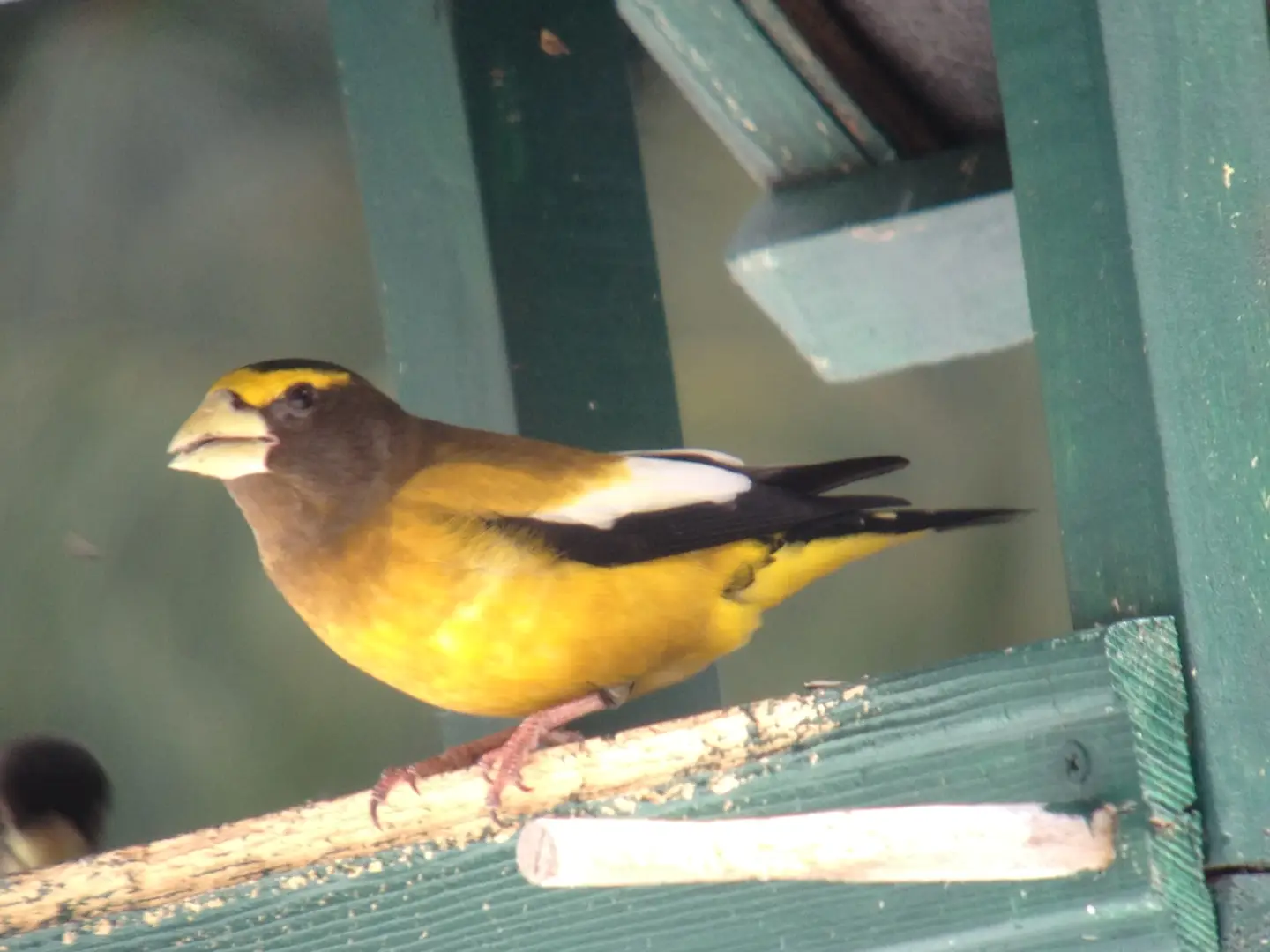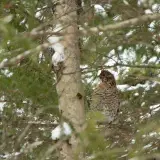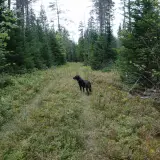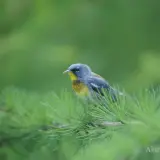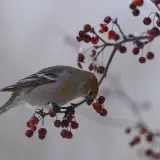Winter Birds
This winter, birds in the boreal habitat areas of Newcomb and Minerva have been a magnet for visiting birders! With beautiful Evening Grosbeaks visiting feeders in Newcomb and Red Crossbills currently nesting along Route 28N, most of my guided birding trips this season have been focused in the central Adirondacks and Schroon Lake Region.
Birders delight in seeing our year-round Black-backed Woodpeckers, Gray Jays, and Boreal Chickadees – the sought-after boreal trinity in the Adirondacks. In winter, species to our north irrupt south into our area. Each year, the mix of winter irruptive species is a bit different depending on food sources. The irruptive species add even more excitement to winter birding trips.
This year, irruptive species in the Newcomb – Minerva area include: Northern Shrikes, Bohemian Waxwings, American Tree Sparrows, Snow Buntings, Red Crossbills, Pine Siskins, and Evening Grosbeaks (the last 3 species also nest in the Adirondacks).
NYS Ornithological Association’s Winter Weekend
The New York State Ornithological Association (NYSOA) recently held a winter weekend in the central Adirondacks. Twenty-four people from every corner of NYS and some neighboring states traveled to our area for a birding weekend. I led the field trips both days and we spent most of our time in Newcomb and Minerva.
On the first morning of NYSOA’s winter weekend, we traveled to Newcomb in a long car caravan. We observed many Evening Grosbeaks at feeder locations. Other finch species, including Purple Finches, Pine Siskins, and American Goldfinches, were also found at feeder locations and at most of our birding stops along Route 28N. American Tree Sparrows were also observed at the feeders.
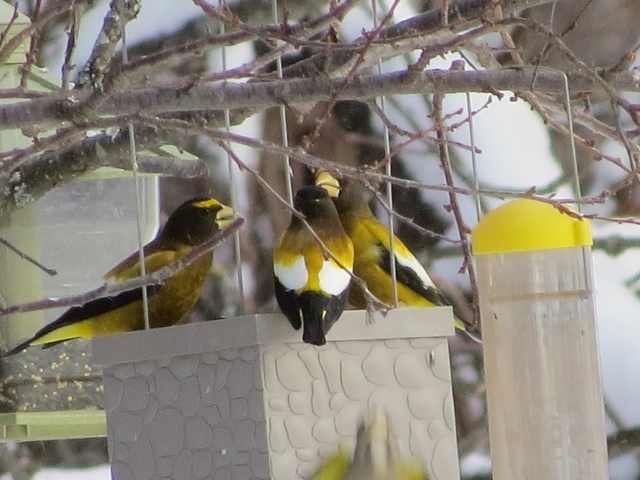
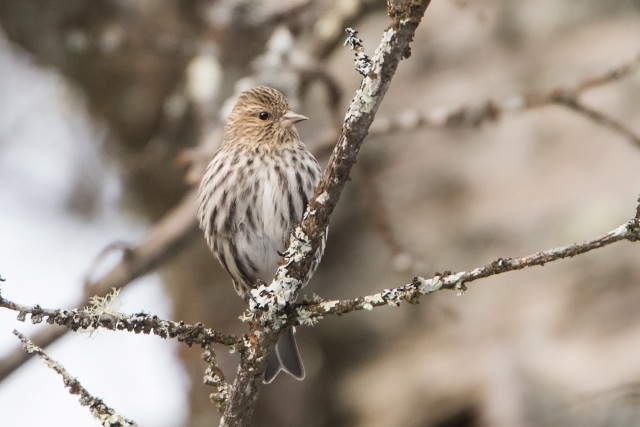
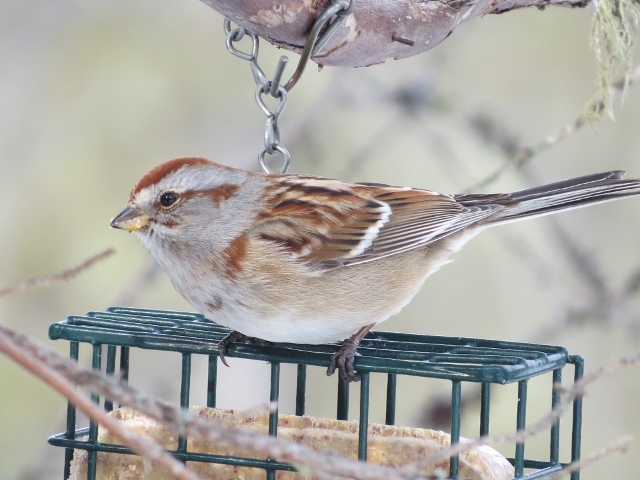
We made a long stop at the rest area near the medical center in Newcomb. Participants were thrilled to see Red Crossbills, and more Evening Grosbeaks flying overhead. A large flock of Cedar Waxwings was found in a fruit tree at this location.
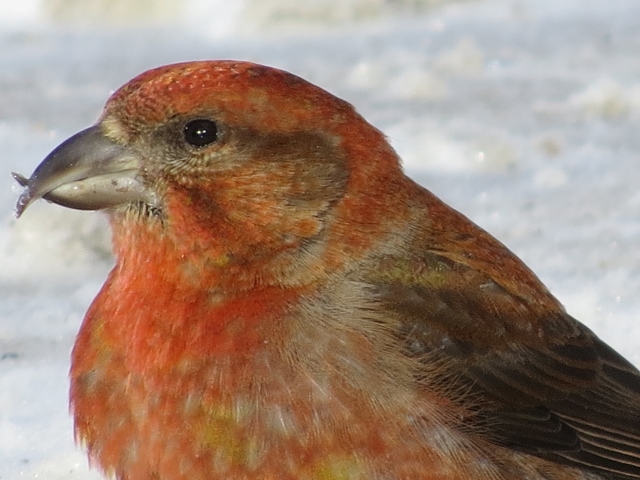
Newcomb is a small town and our long car caravan of birders did not go unnoticed! We heard that several residents asked if there was a funeral going on that they didn’t know about!
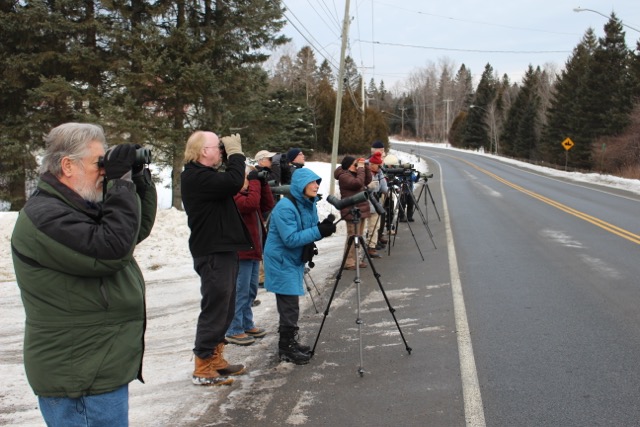
At the Boreas River Bridge in Minerva, we found 3 Boreal Chickadees and several participants took photos of this active species. More Red Crossbills were found at the bridge gritting in the road. Large flocks of Pine Siskins were found everywhere we stopped.
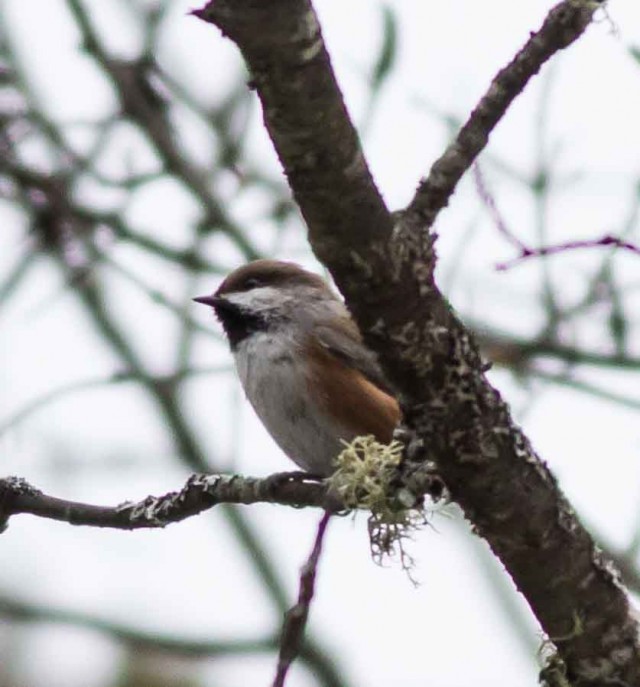
A trip to Sabattis Bog in Long Lake gave us time to view beautiful Gray Jays. The friendly Gray Jays came out for bread, raisins, and seeds!
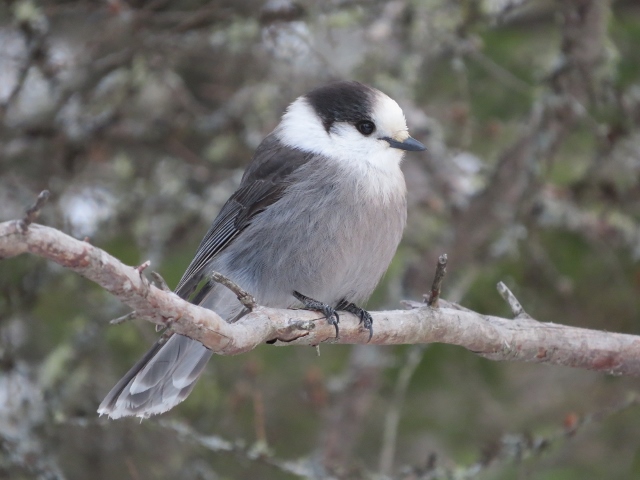
After lunch, we all gathered at the Adirondack Interpretive Center in Newcomb where I gave a presentation on winter irruptive species. Nineteen species that irrupt into our northern NY region were presented using photos, video, and audio sounds. Information on why the species irrupt to our area, and where to find them, was also covered.
Our second day of birding was also primarily spent in Newcomb and Minerva. We visited feeder locations in Newcomb and then spent time in boreal habitat along Route 28N and the Tahawus Road. A Black-backed Woodpecker was heard calling as we hiked along Tahawus Road. As we continued hiking, we approached a rabbit hunter by his truck. His hunting beagle could be heard far away in the forest. He decided to drive down the road a bit when he saw our group approaching. As he drove away, a beautiful Snowshoe Hare, in its winter-white color, hopped across the road from where the hunter’s truck had been parked. Everyone clapped for the wily hare!
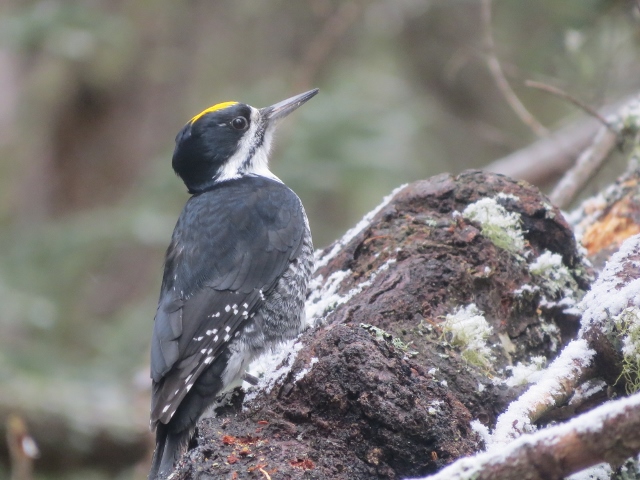
Overall, during the Winter Weekend event, 23 species were found including a Red-tailed Hawk, 2 Black-backed Woodpeckers, 8 Gray Jays, 3 Boreal Chickadees, 27 Red Crossbills, hundreds of Pine Siskins, and over 50 Evening Grosbeaks. Many of the participating birders were seeing these species for the first time.
Additional Winter Bird Species
Bohemian Waxwings have occasionally been showing up at fruit tree locations in the central Adirondacks including Newcomb and Long Lake. This species nests in northwestern Canada and Alaska. It is usually the most asked-for species to see on my winter birding tours. On a recent tour with a Connecticut couple, we found 29 Bohemian Waxwings in a fruit tree in Long Lake.
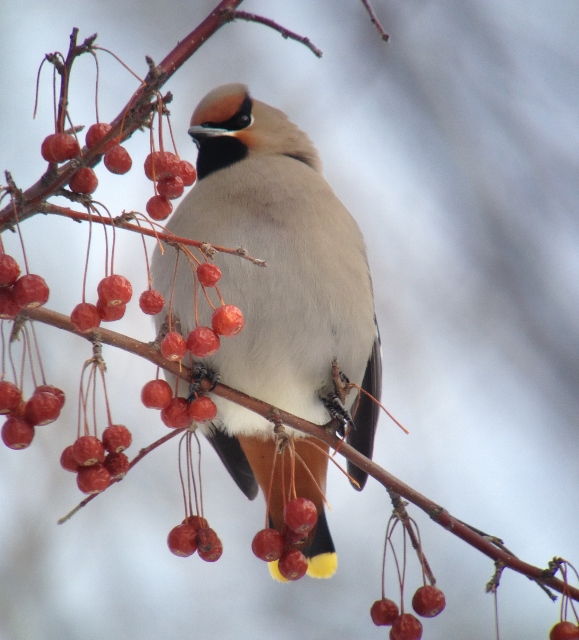
Northern Shrikes have also been found in Newcomb and Long Lake this winter. One bird appears to be wintering at the Little Tupper Lake inlet along Sabattis Circle Road in Long Lake. Many birders have been photographing it.
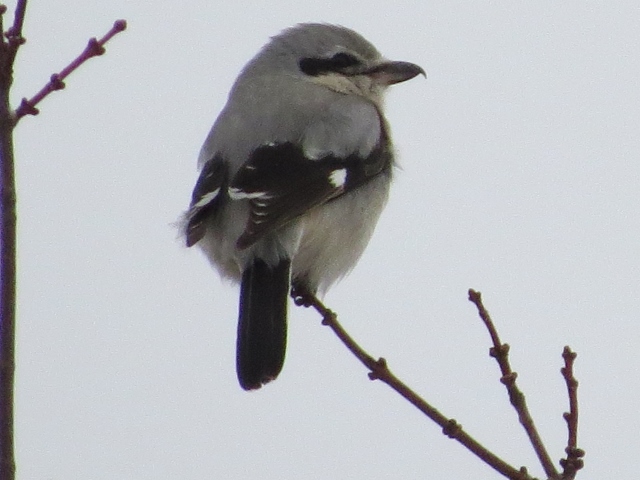
With milder temperatures this winter and minimal snow cover, Snow Buntings have been found throughout the winter in the central Adirondacks along roadways. We normally see this species in the central Adirondacks as it migrates through on its way south or to lower elevations in the St. Lawrence or Champlain Valleys. It has been nice to see them all winter!
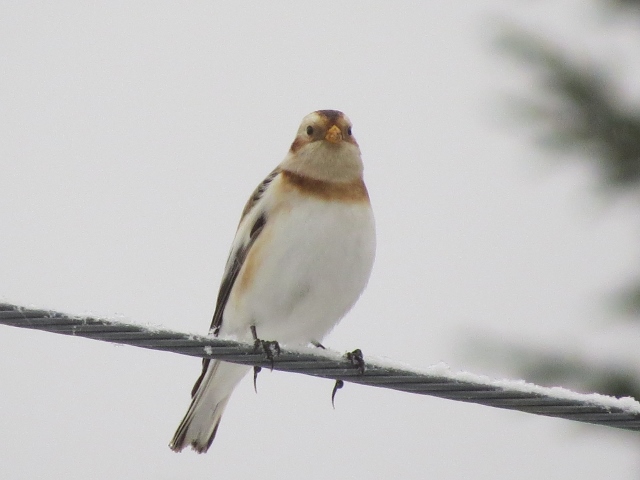
The year-round boreal bird species of the Adirondacks bring visitors every winter, and the irruptive species, which are a different mix each year, add even more excitement to winter birding trips!
If you are planning a winter birding excursion to the central Adirondacks, there are many warm, comfortable places to stay and plenty of restaurants with great food to make your trip enjoyable.
